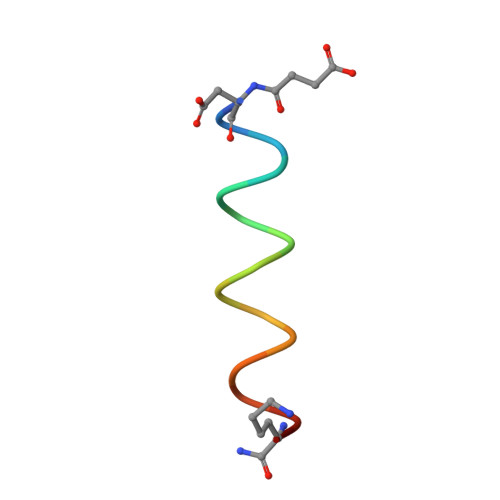Removing an interhelical salt bridge abolishes coiled-coil formation in a de novo designed peptide
Meier, M., Lustig, A., Aebi, U., Burkhard, P.(2002) J Struct Biol 137: 65-72
- PubMed: 12064934
- DOI: https://doi.org/10.1006/jsbi.2002.4467
- Primary Citation of Related Structures:
1L4X - PubMed Abstract:
Alpha-helical coiled coils represent a common protein oligomerization motif that are mainly stabilized by hydrophobic interactions occurring along their coiled-coil interface, the so-called hydrophobic seam. We have recently de novo designed and optimized a series of two-heptad repeat long coiled-coil peptides which are further stabilized by a complex network of inter- and intrahelical salt bridges. Here we have extended the de novo design of such two heptad-repeat long peptides by removing the central and most important g-e' Arg to Glu (g-e'RE) ionic interhelical interaction and replacing these residues by alanine residues. The effect of the missing interhelical ionic interaction on coiled-coil formation and stability has been analyzed by CD spectroscopy, analytical ultracentrifugation, and X-ray crystallography. We show that the peptide, while being highly alpha-helical, is no longer able to form a parallel coiled-coil structure but rather assumes an octameric globular helical assembly devoid of any coiled-coil interactions.
- M.E. Müller Institute for Structural Biology, University of Basel, Switzerland.
Organizational Affiliation:



















